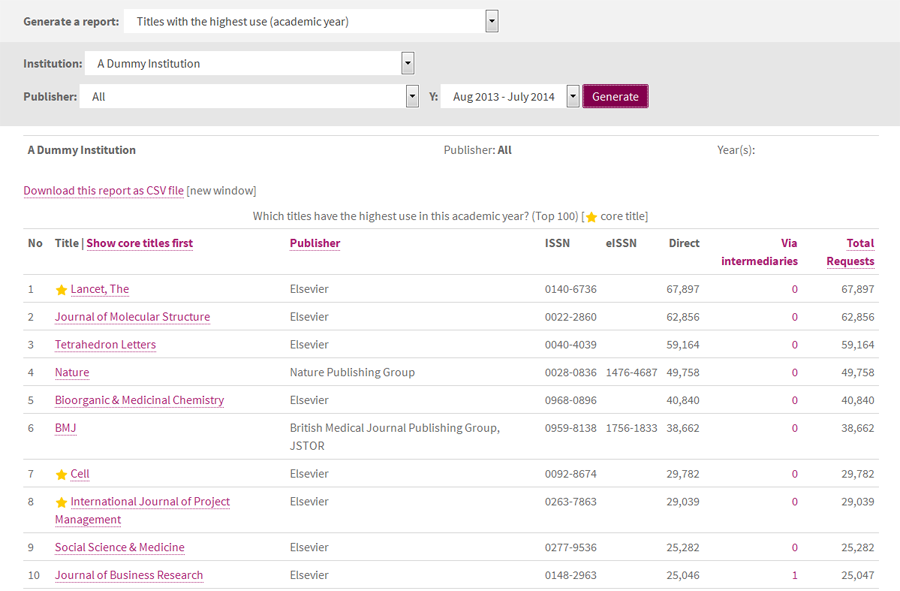Titles with the highest use (academic year)
What it tells you
This table shows which 100 titles have had the highest number of requests. You can display by publisher or all publishers, and by academic year or all years. All figures include usage through gateways and host intermediaries (ingentaconnect (Publishing Technology), SwetsWise, EbscoHOST, Ebsco EJS and ProQuest) and via JSTOR if applicable.
How to run the report
- Log in to the portal and go to on Journals (R4)
- Select Titles with the highest use (academic year)
- Select an individual publisher or all publishers
- Select a year or select all years
- Click Generate
How to interpret the data
The top titles are sorted by total requests (however intermediary and direct access are shown separately and could therefore be separated if data are downloaded).
If you have added details of your core (subscribed) titles, these will be
highlighted by a star in the table. Open Access journals will also be
highlighted with the DOAJ symbol. 
Most summary reports in JUSP include intermediary figures as given in this report, either included in the totals or shown separately. This is always made clear in the notes for each report.
Please note that Ebsco EJS provided usage statistics up to July 2014; after that date usage of all titles accessed via Ebsco EJS comes directly from the publisher.
Top tips for using this report
- If you have identified subscribed or core titles as starred items, you will see at a glance which of these appear in your top 100 titles, and which other titles are also getting high use. Sort your report to see your subscribed or core titles first
- Sort by publisher to see how individual publishers are represented in your top 100 titles
- Click on individual journal titles to see usage of that title across all years for which data are available including accesses via gateways and host intermediaries and via JSTOR if applicable. JR1a (backfile) and JR1 GOA (Gold Open Access) usage are also displayed
- Download as a CSV file and sort to easily identify core titles, open access titles and other titles with high use
- Consider sharing this information with academics to demonstrate top performing titles (either overall, or those relevant to their areas)
- High performing resources may be worth highlighting in library reporting mechanisms or publicity
- If you have subscribed titles rather than deals, you may find all your titles listed in this report (either with all publishers or individual publishers depending on the number of subscribed titles you take). This will give a useful overview of the use of subscribed titles

